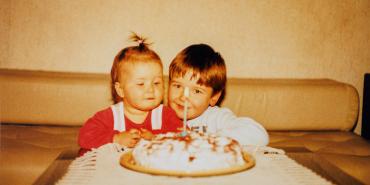Where is the Love?

When my brother-in-law fell off his roof and cracked his skull on the cement, within minutes his church was galvanized. The hospital waiting room filled with support people. An email solicited prayers and his restored health was a miracle. Eventually, the congregation raised funds for the bills that arrived during his recovery period. The love his church poured out was a testimony to all.
Local churches can be incredible conduits of love and mercy. When a church family hits a crisis due to fire, flood, or disease, we surround—sometimes even overwhelm—them with our love. As we share our resources, people are clothed, bills are paid, the hungry are fed. When Jesus commanded us to love (John 13:14, 15:17) this certainly included acts of compassion, but His command was aimed at pushing us deeper than writing a check or showing up with a pan of lasagna.
The earmark of our holiness theology is that we are people who love God with all of our hearts, souls, and minds, and love others as ourselves.
We teach that the fullness of this love is only available to us as we consecrate our lives to God. We describe this in many ways, one of which is a "surrendered will." As we release our own dreams, will, desires, and plans to God we open ourselves to live in love.
But what does this love look like when placed in the context of our normal everyday interactions with those around us?
What does it look like when we're called to love people whom our hearts don't normally go out to, or who aren't loveable?
What if my brother-in-law, who cracked his head and was so loved, had instead been the person in charge of making changes to the children's program? Would the church's love be evident if he had asked Auntie Mae, who has worked in the nursery for 50 years, to fill out a criminal background report required of all children's workers? What if he dared change where Sunday School classes met, or introduced a new venue for Children's Church? Would he "feel the love" then?
Whatever the change, we've all witnessed eyes rolling, and ugliness spewing from the lips of the "saints" in our churches, causing us to ask, "Where is the love?" Short of the next crisis, where is the evidence that these people love God with all their heart, soul, and mind and love others truly as themselves?
When Jesus introduced this command to love one another, it was in the context of washing feet, even as hate, betrayal, and denial cast their shadows over Him. Amid people vying for power, resisting change, and creating violence, Jesus spoke a new reality. This Kingdom, He proclaimed, was one in which we should be quick to serve, ready to love, and willing to make sacrifices. Jesus knew we would have a difficult time living this out. We would tend to follow the ways of Judas (betrayal), Peter (denial), and the other disciples (holding on to position and power). Accordingly, we have not always lived out our call to holiness.
Yet, Jesus stood in the chaos of His early followers and the games of power and control they played, modeling and speaking to this new reality: "This is my command: Love each other" (John 15:17).
While we may mentally point our fingers at someone else in the church, we must surrender our hearts, souls, and minds to the cleansing power of God. Let's breathe deep of God's Spirit before moving into the swirl of activity and conflict that makes up the world in which we live and work.
As we look to Jesus we know this path is not easy, that it will take a commitment to serve, a willingness to sacrifice (even our strong preferences) and an ever present willingness to forgive. We can, through a life given over to God's Holy Spirit, live a life of love and mutual concern for each other even while, on some issue, we may disagree. It begins with an absolute commitment to be conduits of God's love in all times, in all places, and with all people.
Mary Rearick Paul is associate professor of Christian ministry at Olivet Nazarene University. Previously she had served as a pastor on the New England District.
Holiness Today, Jan/Feb 2007
Please note: This article was originally published in 2007. All facts, figures, and titles were accurate to the best of our knowledge at that time but may have since changed.




